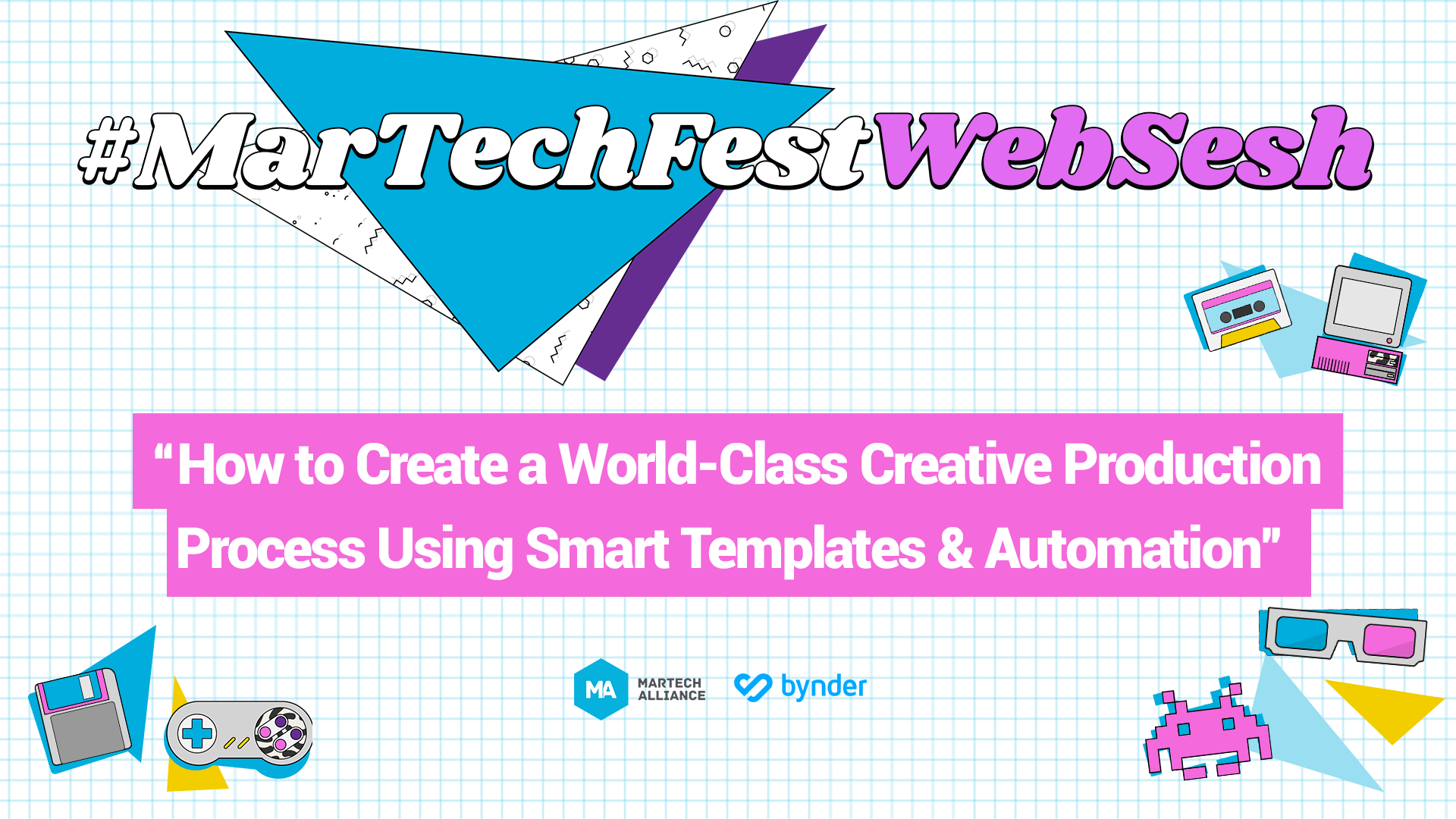Georgi Mirazchiev, Digital Marketing Specialist at Bynder, shares his creative content secrets and gives us a glimpse into how successful brands are using smart templates and automation to streamline their creative development and execution. By using efficient and effective creative production processes you and your team can save HUNDREDS of hours of design and creative time, and you can take those hours straight to the bank my friend.

Rapidly changing consumer habits are creating a huge strain on marketing and creative teams to produce more content with less resources. But creating great branded content quickly and in high-volume doesn’t need to be a major drainer on your time and creative resources.
Georgi discusses how you can use the latest martech to save on time and get the creative juices flowing by:
- Streamlining on-brand content production to drive optimal return on time and increase efficiency
- Empowering non-technical or creative users to create and adapt creative to local markets with ease
- Safeguarding your brand by templating and automating what’s editable without needing a laborious approval process or creative oversight
According to a 2019 report from Interactive Advertising Bureau, digital video advertising grew by 25% in 2019 and is projected to grow even more over the coming years. In fact, Georgi tells us that some reports from the US state that ad spend on Google and Facebook has overtaken ad spend on TV! Now you try telling us that content isn’t king.
The volume and pace of content creation is growing at an extraordinary rate and it’s not slowing down any time soon. The high demands to produce more content and faster leaves less time for brand concepts and storytelling which can result in the dreaded creative ultimatum: quantity or quality.
.png?width=1263&name=MicrosoftTeams-image%20(12).png)
We know great creative drives marketing results, and we want more without sacrificing the quality. So what can we do?
We need to reframe the content crunch and think about the process differently.
The key: We don’t need unique creative assets for every touch point. Not every customer needs bespoke brilliance.
Variations that are simple can be delegated, variations that are repetitive can be automated and variations that are constrained can be streamlined.
“Distributing content creation, you say? Where do we start?” Well enthusiastic reader, we’re about to tell you:
1. Instead of designing finished assets that work downstream get your creative teams starting with templates.
2. These templates can be shared with execution teams, social media market teams and more, these teams can then produce the different variations themselves.
3. By implementing a review cycle and approval process, the creative teams can ensure all assets are in line with the brand and ensure consistency.
4. Then we can then execute the campaigns.
The other way we can solve the problem is by altering some of the content creation we do:
1. Again, this process starts will the creative team creating templates.
2. Instead of sharing these templates with the rest of the marketing team, they are connected to data sources.
3. Data sources work with templates and then the automation software generates all the different variations automatically.
4. Which then leads us to the good stuff - campaign execution.
We can name benefits of scaling content creation through templates by the bucket full. Not only can we achieve effective personalisation, but we can also improve our agility, being able to achieve a faster time-to-market and even give back the creatives more time to be, you know, creative. This leaves more time for all the stuff that blows your socks off like storytelling and brand building.
To find out more about how Bynder uses creative automation tools to do just that, plus catch the (post-live) Q&A, you can watch this sesh on demand right here.
